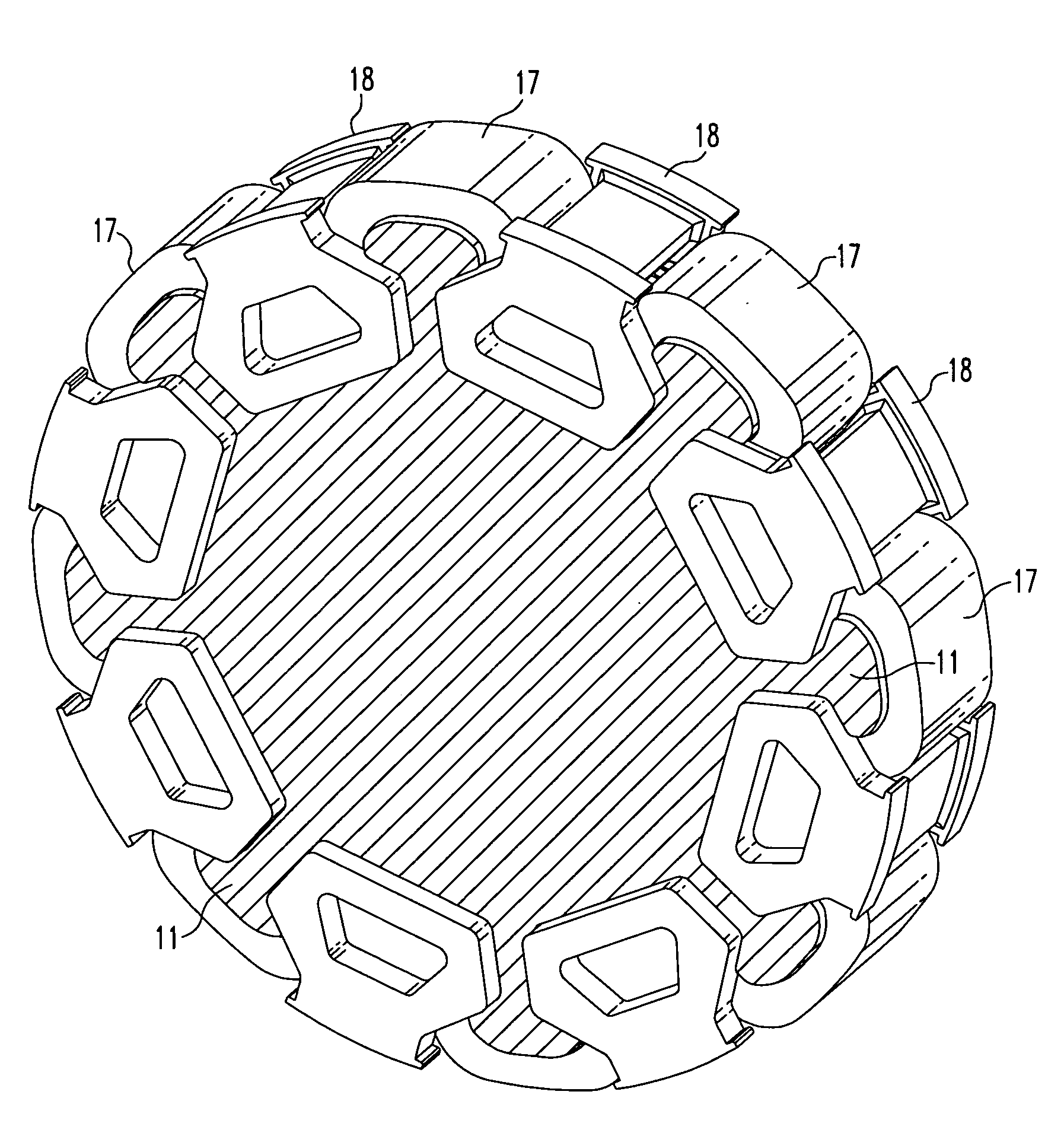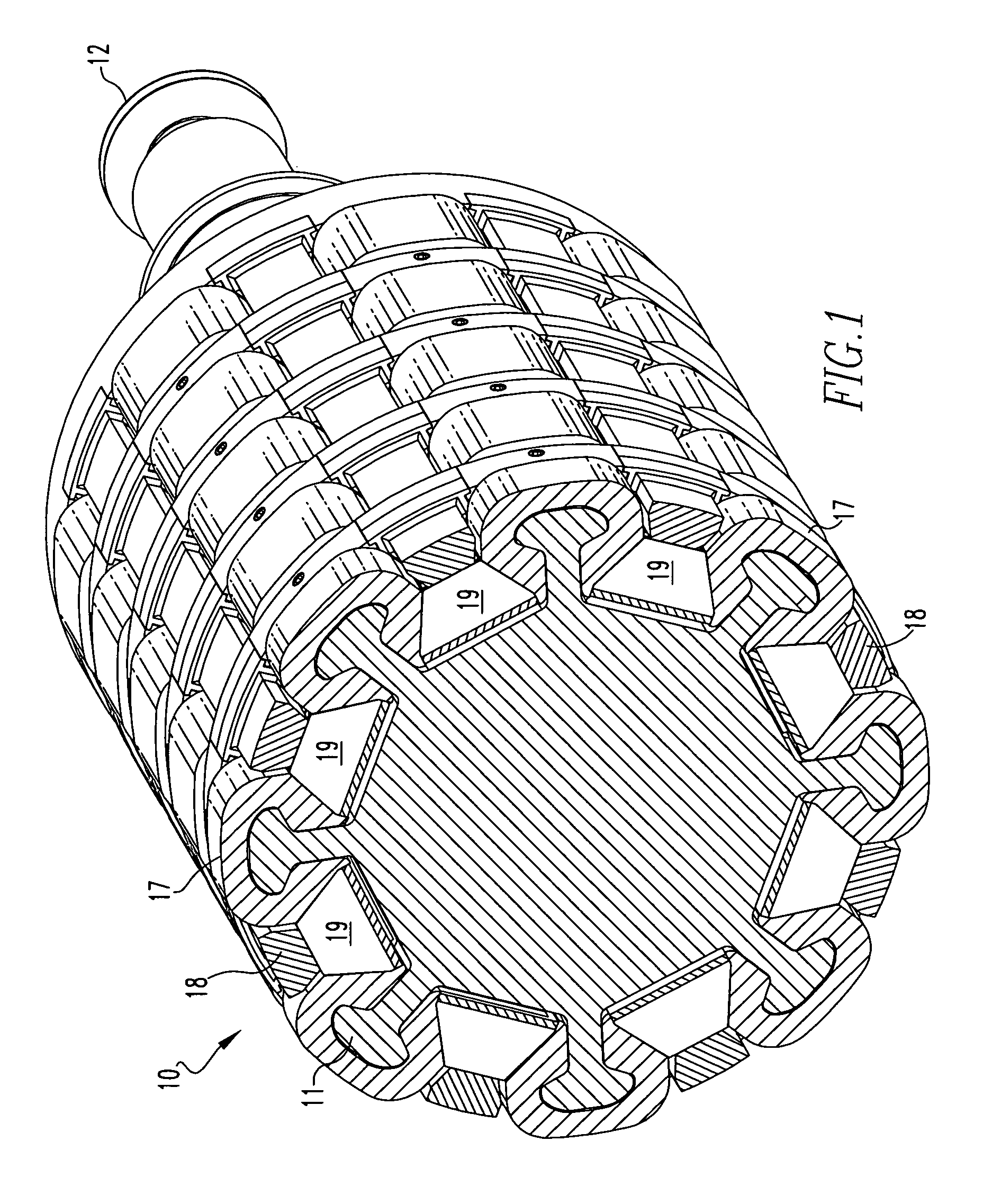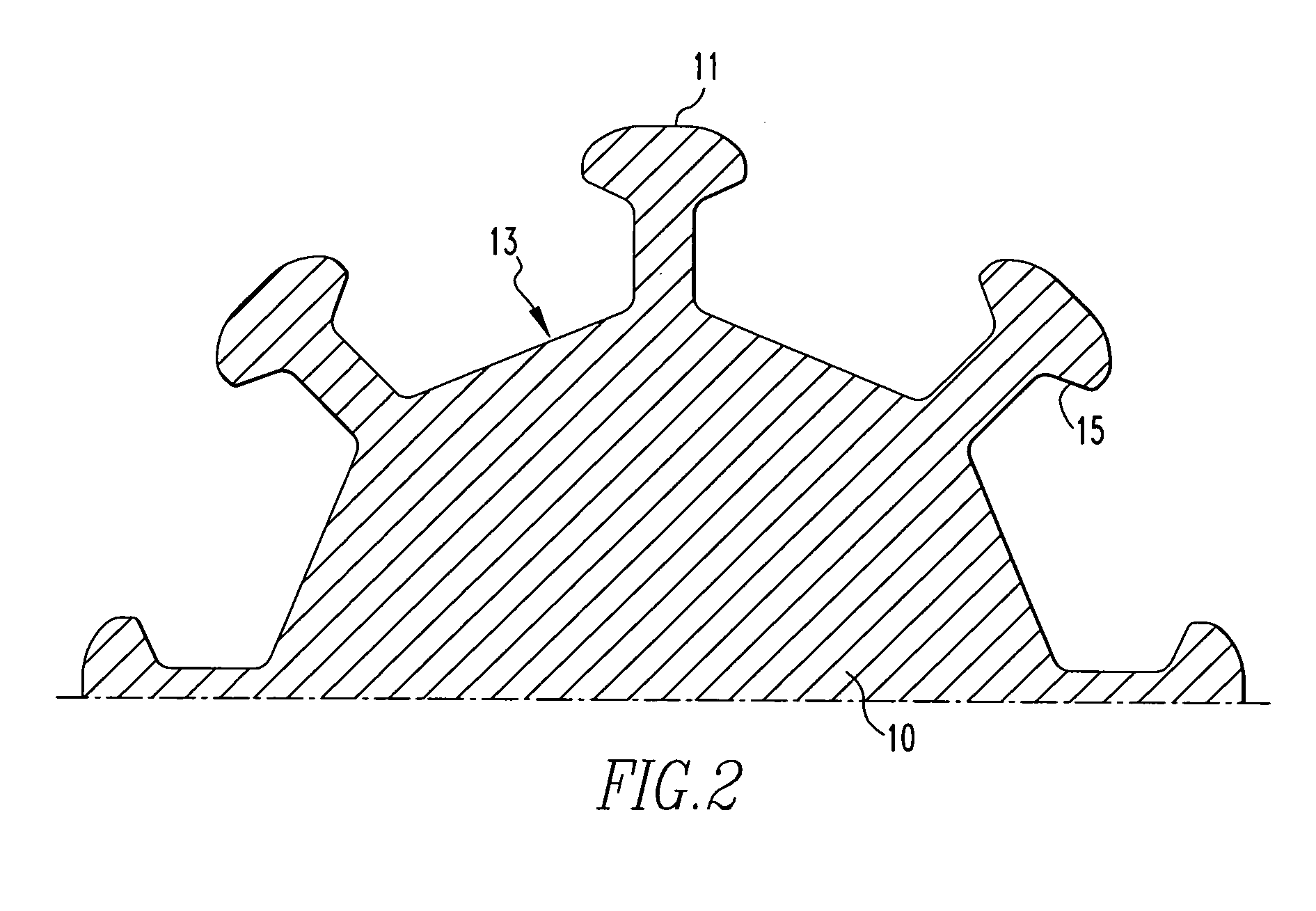Permanent magnet rotor and magnet cradle
a permanent magnet rotor and magnet cradle technology, which is applied in the direction of magnetic circuit rotating parts, dynamo-electric machines, etc., can solve the problems of interference with other parts, high speed/high power permanent magnet motor design, and limited speed and power of permanent magnet motors or alternators with magnets mounted with this first approach
- Summary
- Abstract
- Description
- Claims
- Application Information
AI Technical Summary
Benefits of technology
Problems solved by technology
Method used
Image
Examples
Embodiment Construction
[0021]Referring to FIG. 1, the shaft 10 comprises the foundation of the permanent magnet rotor according to this invention. The shaft 10 is made of non-magnetic high strength material, such a nickel cobalt alloy. As shown in FIG. 2, the shaft 10 has an interrupted cylindrical surface defined relative to the rotational axis of the rotor. At each end of the shaft, provisions are made for bearings 12. The bearings 12 establish the rotational axis of the rotor. The shaft 10 has an even number of substantially identical recessed and overhung slots 13. The slots 13 define substantially identical generally T-shaped ribs 11 with dovetail surfaces 15 adjacent the slots. The magnets, as will be explained, are positioned within the slots held by a cradle.
[0022]While the shaft 10 has a continuous cross section (extending axially) in the vicinity of the magnets, it is helpful to consider the shaft in individual sections supporting an even number of magnets. FIG. 3 illustrates such a section brok...
PUM
 Login to View More
Login to View More Abstract
Description
Claims
Application Information
 Login to View More
Login to View More - R&D
- Intellectual Property
- Life Sciences
- Materials
- Tech Scout
- Unparalleled Data Quality
- Higher Quality Content
- 60% Fewer Hallucinations
Browse by: Latest US Patents, China's latest patents, Technical Efficacy Thesaurus, Application Domain, Technology Topic, Popular Technical Reports.
© 2025 PatSnap. All rights reserved.Legal|Privacy policy|Modern Slavery Act Transparency Statement|Sitemap|About US| Contact US: help@patsnap.com



